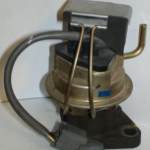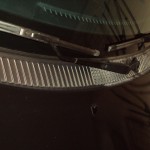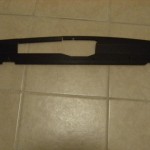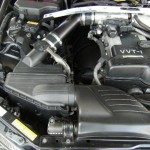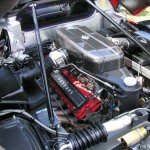Popular Posts
- Don't Block or Remove the EGR Valve, It's Saving You Money
- Keep Your Engine Alive: The Importance of Oil Temperature
- Low Temp Thermostats: What's the Advantage?
- Wheel Tech, Part III: Wheel Diameter's Effect on Performance
- Beating the Heat: Advantage of a High Pressure Radiator Cap
- How to Compare Weight Savings to Horsepower Gains
- Check Your Engine's Health: With a Vacuum Gauge
- Wheel Tech, Part II: Width Matters
- What's So Wrong With Nitrous?
- Stiff Stuff: Strut Bars and Braces
Resources & Classes
-
Author Archives: Nathan Morris
Don’t Block or Remove the EGR Valve, It’s Saving You Money
The EGR Valve (Exhaust Gas Recirculation) valve is found on almost all modern engines and is considered part of the emissions package of your vehicle. In some states, removing it will cause you to fail your emissions inspection. Unfortunately, there is a huge misunderstanding about it's function circulating around the internet and sadly a lot of folks have actually removed it in the search for "free power."
The EGR valve is not simply about re-burning exhaust gasses to try to clean up the emissions. In fact, it's more about saving fuel and as a side effect, reducing emissions. (more…)
Posted in Engine, Fuel Economy
1 Comment
Restoring Faded Plastic Trim with Back-to-Black
Oxidized plastic and rubber really shows the age of a car. Want to help make your old car look new off the show room floor? No amount of polish and cleaning will do it if the unpainted black plastic surfaces and rubber moldings look nearly white from UV exposure.
Project Lexus' cowl area was starting to look pretty rough after 10 years of sun exposure and the rubber weather sealing strips could use some help as well. So I wanted to share with you this quick detailing tip and share my results.
Mothers back-to-black is a product that restores black rubber and plastic surfaces to their original black color with pretty amazing results. While it's not a permanent fix, it does last a long time and the results are certainly worth it. You could buy new panels, but aside from the expense, they'll eventually wind up the same way as well so it's easier to simply treat with back-to-black occasionally. (more…)
Posted in Audio & Visual
Comments Off on Restoring Faded Plastic Trim with Back-to-Black
Tech Tips: Save Gas, Find an Oil Leak, Stuck Bolts, Brake Flushing, Sticker Removal
Today I'm sharing 5 little tech tips that don't necessarily warrant their own article but are really useful to know anyway.
The first tip is how to find the source of an oil leak using foot powder. Clean the area where an oil leak is suspected really well, then spray the area with a generous coating of foot powder. Then run the engine for a few minutes and you'll easily be able to see the source of the oil leak by the presence of a nice dark stain in the powder. (Thanks to Matthew Crawford). (more…)
Posted in Tech Tips
Comments Off on Tech Tips: Save Gas, Find an Oil Leak, Stuck Bolts, Brake Flushing, Sticker Removal
Engine Bloodwork: Benefits of Oil Analysis
This month, I got on the phone with Ryan Stark of Blackstone Labs to talk about the most interesting topic in the world! OIL!
Well, okay, I'll give you that oil isn't terribly interesting but it is a vital fluid in our engines and one that is wrapped up in a lot of confusion, forum legend, and marketing bull. Matter fact, what's actually really interesting is what information out there is actually true, and what's complete and total B.S.
 Ryan has been analyzing oil samples for over 15 years from pretty much every type of engine in existence. He's seen oil samples from airplanes, military vehicles, and nearly every passenger car or truck in existence. The people over at Blackstone have a massive database built from these samples so if there were ever an independent authority on which oil is best to use - he'd probably be it, if you ask me. Especially if your interest is in protecting your engine as best as possible. Ryan therefore is another one of our Tuner University Certified Experts.
Ryan has been analyzing oil samples for over 15 years from pretty much every type of engine in existence. He's seen oil samples from airplanes, military vehicles, and nearly every passenger car or truck in existence. The people over at Blackstone have a massive database built from these samples so if there were ever an independent authority on which oil is best to use - he'd probably be it, if you ask me. Especially if your interest is in protecting your engine as best as possible. Ryan therefore is another one of our Tuner University Certified Experts.
Posted in Engine, TU Premium
2 Comments
Secrets of Header & Exhaust Design
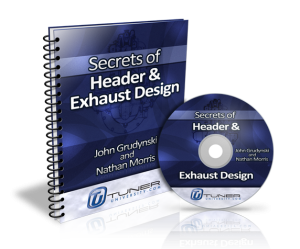 In The Secrets of Header & Exhaust Design, you'll get a unique opportunity to listen to an interview with John Grudynski of Hytech exhaust as he shares his wisdom from decades of building race winning custom headers and exhaust systems for street cars and a whole host of winning teams from SCCA, Dirt Track, Grand Am, and more.
In The Secrets of Header & Exhaust Design, you'll get a unique opportunity to listen to an interview with John Grudynski of Hytech exhaust as he shares his wisdom from decades of building race winning custom headers and exhaust systems for street cars and a whole host of winning teams from SCCA, Dirt Track, Grand Am, and more.
You'll receive a copy of the entire interview in MP3 Audio format as well as the transcript in PDF/eBook format which was part of the interview series available to Tuner University Premium members.
Price: $69.95
Here's what you'll learn when you claim your copy of this incredible course: (more…)
Posted in Resource Center
Comments Off on Secrets of Header & Exhaust Design
Vented Radiator Panel: Good in Theory, But in Practice?
Every now and again I see a product on the market that looks really well thought out and I just have to try it out. A year or so ago, I came across an item that checked all the right boxes for me, it even talked about air pressure which you probably know I have a special place in my heart for... The product? A "vented" radiator panel.
"Radiator panels" are really popular right now as one of the hot new "JDM" parts. Admittedly, they look cool and give you a place to display a neat sticker or two and the theory behind them is okay. The theory is that by sealing up the top of radiator with this panel that air flow is forced through the radiator rather than over (what about under/around?) it where it'd normally go into either the engine bay (if no hood seal) or out the side cracks of the hood.
It is true that the better "sealed" the radiator, the more likely air is to flow through the radiator than around it (particularly at higher speeds). Basically the applicable rule here is that air flows from higher pressure to lower pressure areas, always. However, I do not have much data about whether or not these radiator panels really do much and I cannot imagine a circumstance that a daily driven car would go through that would require or benefit from this part. A heavily tracked car, perhaps, but not a daily driver.
Posted in Engine
Comments Off on Vented Radiator Panel: Good in Theory, But in Practice?
Are You Dense? Importance of Air Density in Making Power
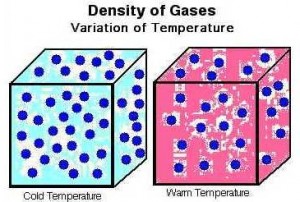 Air is a combination of gasses, primarily nitrogen (about 78%), Oxygen (~20.95%) and to a much smaller extent Argon, CO2 and other trace elements.
Air is a combination of gasses, primarily nitrogen (about 78%), Oxygen (~20.95%) and to a much smaller extent Argon, CO2 and other trace elements.
All gasses expand when heated up, meaning that their molecules spread out and thus fewer molecules occupy the same amount of space. Thus, hot air has less oxygen and cold air has more. Today we're going to talk about how important air density is and how you can maximize your power production by paying close attention to charge temps. We're also going to look at how air density varies when under boost and when at atmospheric pressures and how temperature can actually cancel out boost - if it's not controlled!
Posted in TU Premium
Comments Off on Are You Dense? Importance of Air Density in Making Power
IS300: DIY for “TU Intake Snorkel” Mod
I have received numerous requests for a DIY on my snorkel mod that I detailed in the intelligent modification series from the IS300 community.
It is based on my measurements of restriction in the stock intake system, it does two things: reduces restriction imposed by factory snorkel/airbox, increases the availability of pressurized (higher than atmospheric pressure) air at speed. In effect, it adds additional "ram air" on the highway.
Using a sealed airbox is ideal in any car that will be going through gears frequently (street car, road racing car). The reason is that even if it doesn't produce the highest hp, which sometimes it does, is that transient response is better with an airbox than with an open element air filter. When the throttle closes between shifts for example, the air that was quickly rushing in hits a wall and is forced back down the intake system. In a sealed system, the air actually bounces back and helps ram more air in when the throttle is re-opened. In a open air filter system, the air is lost to the atmosphere and thus power just after a shift is harmed. There are other reasons, but the best "proof" of this is that even the hardcore no-creature comfort exotic cars like the Ferrari Enzo DO NOT use open element air filters, but still - air boxes.
The factory air box generates more and more air pressure as the car speeds up, by replacing the airbox with a "open element" conic filter, you lose that benefit completely. Just pointing the snorkel at it just supplies it with the outside air, not the pressure.
Posted in Engine
4 Comments

